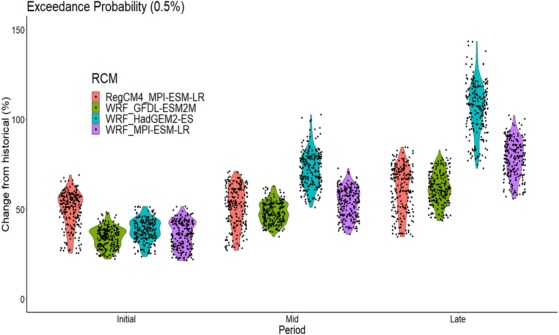New paper! Assessment of hydrological parameter uncertainty versus climate projection spread on urban streamflow and floods
I’m super excited to share that recent PhD graduate Zia Ul Hassan published his first paper, and it’s a big one. The effects of climate change will continue to intensify over the coming decades, with bigger and more intense rainstorms. In urban watersheds, that means more stormwater reaching urban streams, which means we’ve got to build more/better/bigger stormwater controls and take other actions to keep people and the environment from being negatively affected. Good projections of urban hydrology under climate change are important for correctly sizing new and retrofitted stormwater infrastructure. But getting to those projections means dealing with the uncertainty in our climate future (as represented by variation across climate models) and thinking carefully about where our hydrologic models are important sources of uncertainty.
When we look out toward the end of this century, there is significant variation among climate models in terms of precipitation in a particular place, and that has been shown to be more important than hydrologic model uncertainty in previous studies. But what about in urban environments where we are interested in near-term climate change, so that we can design and build infrastructure for the next few decades? No one had looked carefully at climate model variability vs. hydrologic model calibration uncertainty in urban watersheds until Zia took this work on, using a SWMM model for an urban watershed in Cleveland, Ohio as a test case.
Zia’s work shows that when climate model agreement is good (like in the next few decades), hydrologic model uncertainty can be very important. Use of single SWMM calibration, even with inputs from multiple climate models, could lead to under-design of infrastructure, exacerbating street and stream flooding.
Access to the paper is free for the next 50 days, using this link:
https://authors.elsevier.com/a/1jHlD52cuf9ZL.
Full citation information:

Hassan, Z.U., Jefferson, A.J., Avellaneda, P.M., Bhaskar, A.S. 2024. Assessment of hydrological parameter uncertainty versus climate projection spread on urban streamflow and floods. Journal of Hydrology, 638, 131546. doi: 10.1016/j.jhydrol.2024.131546.
